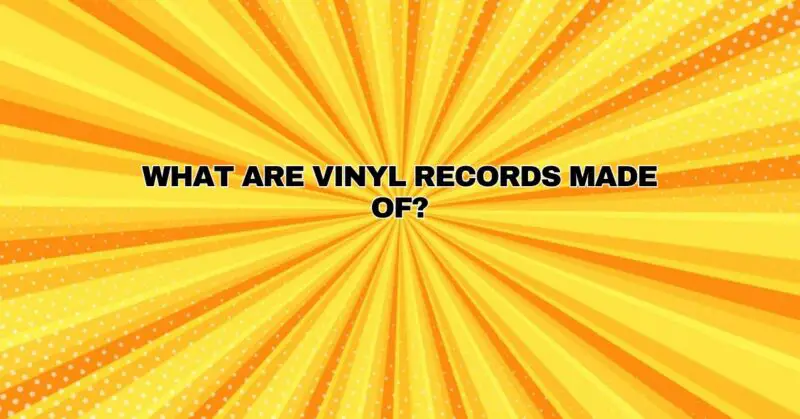Vinyl records, with their warm analog sound and tactile appeal, have been a beloved format for music enthusiasts and collectors for generations. These iconic discs are made from a specific blend of materials and crafted with precision to produce the music we love. In this comprehensive article, we will explore the materials used in the manufacturing of vinyl records and the intricate process that transforms these raw materials into grooved masterpieces.
The Key Components
Vinyl records are primarily composed of two key components:
- Vinyl Compound: The vinyl compound, also known as vinyl resin or PVC (polyvinyl chloride), is the primary material used to create the record’s body. It is responsible for both the physical structure of the record and the recording and playback of audio.
- Labels and Packaging: While not part of the record itself, labels and packaging materials, such as album covers and inner sleeves, are integral components of the vinyl record package.
The Vinyl Compound
- Composition:
- The core ingredient of the vinyl compound is polyvinyl chloride (PVC), a type of plastic known for its durability and versatility.
- Additional elements, such as plasticizers, stabilizers, and colorants, are blended with PVC to create a suitable vinyl compound for record pressing.
- Processing:
- The vinyl compound undergoes a series of processing steps to achieve the desired characteristics. Plasticizers are added to increase flexibility, while stabilizers prevent degradation over time.
- Colorants can be introduced to create colored vinyl records, adding an extra dimension to their visual appeal.
- Mastering and Cutting:
- Once the vinyl compound is prepared, it is used to create lacquer master discs. Audio mastering engineers cut grooves into these lacquer masters using a lathe equipped with a cutting stylus. These grooves represent the audio waveform of the recording.
- Stampers:
- The lacquer master is used to create metal stampers, which are negative replicas of the master. These stampers are essential for the actual pressing of vinyl records.
Record Pressing Process
The actual pressing of vinyl records is a multi-step process that transforms the prepared vinyl compound into playable records:
- Heating and Molding:
- Vinyl pellets are fed into a heated press, where they melt and form a puck-like shape. The metal stampers are used to press grooves into the molten vinyl.
- Cooling and Solidifying:
- After molding, the vinyl is rapidly cooled, causing it to solidify and retain the groove patterns.
- Trimming and Labeling:
- Excess vinyl around the edges of the record is trimmed off, resulting in the familiar circular shape.
- Labels, which are often paper or plastic, are applied to both sides of the record. These labels contain information about the recording, such as the artist, album title, and tracklist.
- Packaging:
- The finished vinyl records are placed in protective inner sleeves and then packaged in album covers or jackets. These covers often feature artwork, liner notes, and additional information related to the album.
Variations and Special Pressings
While standard black vinyl records are the most common, there are variations and special pressings that use different materials or techniques:
- Colored Vinyl: Colored vinyl records incorporate pigments or dyes into the vinyl compound to create records of various colors, such as red, blue, or clear vinyl.
- Picture Discs: Picture discs feature images or artwork embedded between two clear vinyl layers. These records are known for their unique visual appeal but may sacrifice some audio quality.
- 180g Vinyl: 180-gram vinyl records are heavier and thicker than standard records. This extra weight can result in improved sound quality and durability.
Conclusion
Vinyl records are made from a carefully crafted vinyl compound that undergoes a precise manufacturing process. From the initial preparation of the vinyl compound to the pressing, trimming, labeling, and packaging stages, every step is crucial in producing the beloved grooved discs that continue to captivate music enthusiasts and collectors around the world. Whether standard black vinyl or special pressings, these records offer a tangible and timeless way to experience music.


